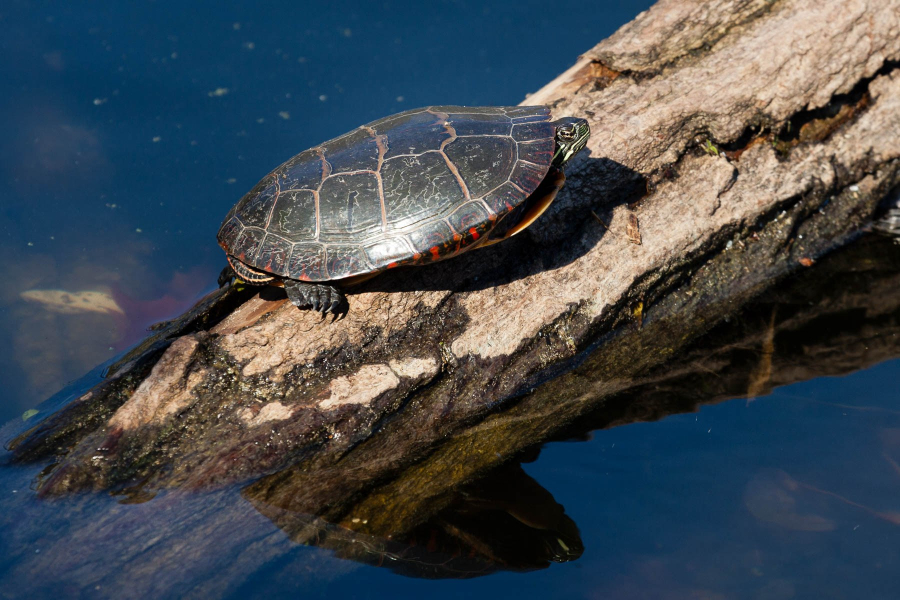The eastern painted turtle: A natural work of art
A reptile famous for its colorful shell

Adorned with intricate red coloring along the sides of its shell and body, plus a goldish-yellow belly, the eastern painted turtle (Chrysemys picta picta) is one the Chesapeake’s best looking reptiles. The turtle can be found basking lazily on logs or rocks. Its array of colors serve more than just aesthetic purposes—they aid in camouflage, helping the turtle blend into its surroundings and evade potential predators.
Native to eastern North America and throughout the Bay region, eastern painted turtles inhabit a wide range of freshwater habitats, including ponds, lakes, marshes and slow-moving streams. These creatures are equally at home in rural wetlands and urban ponds, showcasing their habitat adaptability.
Like many turtles, eastern painted turtles begin their lives as tiny hatchlings emerging from buried nests. These young turtles face numerous challenges as they navigate their environment independently, from predators to fluctuating water levels that may cause them to drown. However, those that survive can live for several decades, with some individuals reaching ages of over 50 years in the wild.
One of the most interesting behaviors of the eastern painted turtle is its habit of basking in the sun. On sunny days, you can spot them perched on logs or rocks, stretching out their limbs to soak up the warmth of the sun's rays. This behavior helps the turtle regulate its body temperature, a process known as thermoregulation. It’s also a good opportunity for social interaction, as turtles often congregate in basking sites.
Beyond their aesthetic appeal and intriguing behaviors, eastern painted turtles play a vital role in maintaining the health of their ecosystems. As omnivores, they consume a diverse diet that includes aquatic plants, algae, insects and small invertebrates. By doing so, they help regulate populations of prey species and cycle nutrients throughout aquatic ecosystems. The species serves as an indicator of environmental health, with declines in their populations often signaling broader ecological imbalances.
As such, their conservation is not only important for the species itself but also for the overall integrity of freshwater habitats.
Despite their adaptability, eastern painted turtles face a range of threats that jeopardize their survival. Habitat loss and fragmentation, pollution, invasive species and illegal collection for the pet trade are among the most significant challenges they confront. Additionally, road mortality poses a significant risk, as turtles often traverse roads in search of suitable nesting sites.
Although the eastern painted turtle has a stable population, it's critical to maintain this status. The critter plays a major role in the balance of freshwater ecosystems, while also being a beautiful species to observe in the wild!

Comments
Hello, My wife and I have a 30 year old Eastern Painted turtle that my wife adopted when she was 10 years old. I'm wondering if there is a preserve or some place where Mis (the turtle) would be more content. Thanks!
Thank you!
Your comment has been received. Before it can be published, the comment will be reviewed by our team to ensure it adheres with our rules of engagement.
Back to recent stories